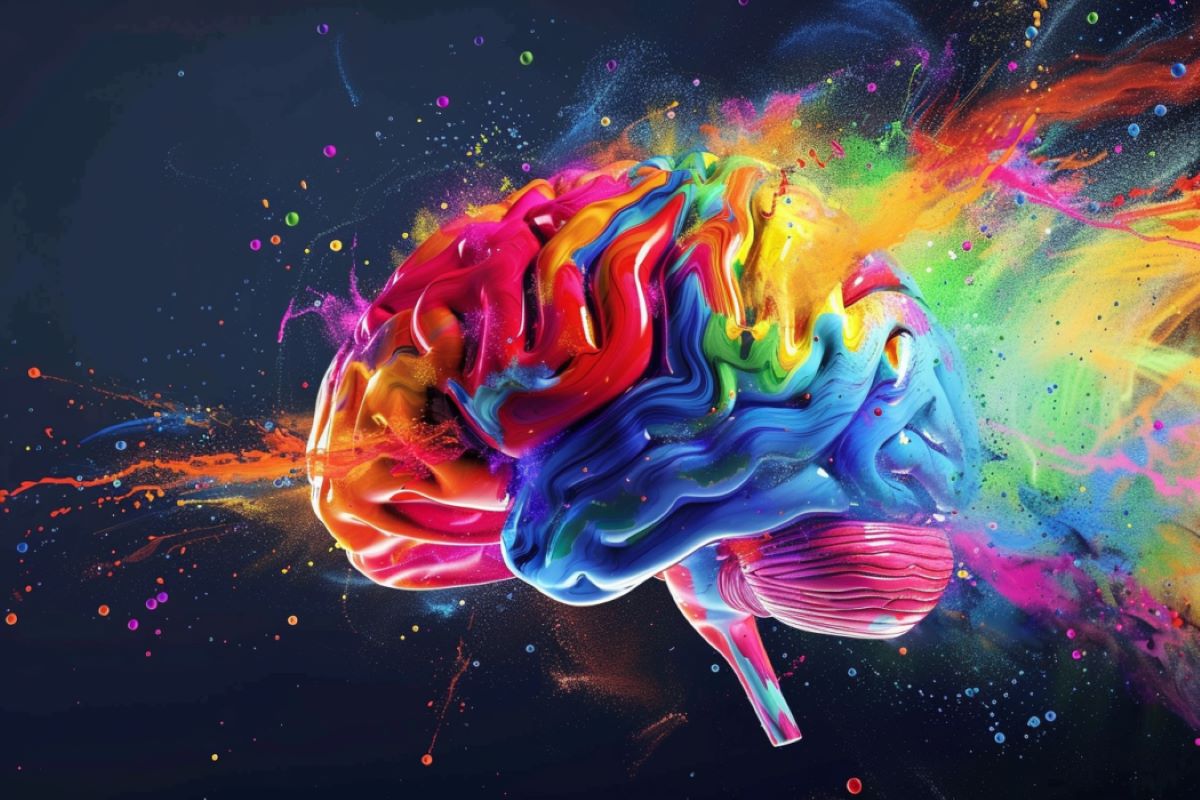Summary: Researchers have identified how the brain’s default mode network (DMN) collaborates with other regions to produce creative thought. By using advanced brain imaging techniques, they tracked real-time brain activity during creative tasks.
This study reveals that the DMN initiates creative ideas, which are then evaluated by other brain regions. Understanding this process could lead to interventions that enhance creativity and aid mental health treatments.
Key Facts:
- DMN Role: The default mode network initiates creative ideas.
- Real-Time Tracking: Advanced imaging tracked brain activity during creative tasks.
- Mental Health Impact: Insights could lead to treatments for disorders affecting the DMN.
Source: University of Utah
Have you ever had the solution for a tough problem suddenly hit you when you’re thinking about something entirely different? Creative thought is a hallmark of humanity, but it’s an ephemeral, almost paradoxical ability, striking unexpectedly when it’s not sought out.
And the neurological source of creativity—what’s going on in our brains when we think outside the box—is similarly elusive.
But now, a research team led by a University of Utah Health researcher and based in Baylor College of Medicine has used a precise method of brain imaging to unveil how different parts of the brain work together in order to produce creative thought.
Their findings published in BRAIN on June 18.
The new results could ultimately help lead to interventions that spark creative thought or aid people who have mental illnesses that disrupt these regions of the brain.
Outside the bo
Higher cognitive processes like creativity are especially hard to study. “Unlike motor function or vision, they’re not dependent on one specific location in the brain,” says Ben Shofty, MD, PhD, assistant professor of neurosurgery in the Spencer Fox Eccles School of Medicine and senior author on the paper. “There’s not a creativity cortex.”
But there’s evidence that creativity is a distinct brain function. Localized brain injury caused by stroke can lead to changes in creative ability—both positive and negative. That discovery suggests that narrowing down the neurological basis of creativity is possible.
Shofty suspected that creative thought might rely strongly on parts of the brain that are also activated during meditation, daydreaming, and other internally focused types of thinking.
This network of brain cells is the default mode network (DMN), so called because it’s associated with the “default” patterns of thought that happen in the absence of specific mental tasks.
“Unlike most of the functions that we have in the brain, it’s not goal-directed,” Shofty says. “It’s a network that basically operates all the time and maintains our spontaneous stream of consciousness.”
The DMN is spread out across many dispersed brain regions, making it more difficult to track its activity in real time. The researchers had to use an advanced method of brain activity imaging to understand what the network was doing moment-to-moment during creative thought.
In a strategy most commonly used to pinpoint the location of seizures in patients with severe epilepsy, tiny electrodes are implanted in the brain to precisely track the electrical activity of multiple brain regions.
Participants in the study were already undergoing this kind of seizure monitoring, which meant that the research team could also use the electrodes to measure brain activity during creative thinking. This provided a much more detailed picture of the neural basis of creativity than researchers had been able to capture before.
“We could see what’s happening within the first few milliseconds of attempting to perform creative thinking,” Shofty says.
Two steps toward originality
The researchers saw that during a creative thinking task in which participants were asked to list novel uses for an everyday item, like a chair or a cup, the DMN lit up with activity first.
Then, its activity synchronized with other regions in the brain, including ones involved in complex problem-solving and decision-making. Shofty believes this means that creative ideas originate in the DMN before being evaluated by other regions.
What’s more, the researchers were able to show that parts of the network are required specifically for creative thought. When the researchers used the electrodes to temporarily dampen the activity of particular regions of the DMN, people brainstormed uses for the items they saw that were less creative. Their other brain functions, like mind wandering, remained perfectly normal.
Eleonora Bartoli, PhD, assistant professor of neurosurgery at Baylor College of Medicine and co-first author on the paper, explains that this result shows that creativity isn’t just associated with the network but fundamentally depends on it.
“We moved beyond correlational evidence by using direct brain stimulation,” she says. “Our findings highlight the causal role of the DMN in creative thinking.”
The activity of the network is changed in several disorders, such as ruminative depression, in which the DMN is more active than normal, possibly related to increased dwelling on negative internally directed thoughts. Shofty says that a better understanding of how the network operates normally may lead to better treatments for people with such conditions.
By characterizing the brain regions involved in creative thought, Shofty hopes to ultimately inspire interventions that can help spark creativity. “Eventually, the goal would be to understand what happens to the network in such a way that we can potentially drive it toward being more creative.”
Funding: This research was supported by the McNair Foundation and the National Institute of Mental Health (grant number R01-MH127006.)
This work was a collaboration between researchers at University of Utah Health, Baylor College of Medicine, and Technion—Israel Institute of Technology.
About this creativity and neuroscience research news
Author: Sophia Friesen
Source: University of Utah
Contact: Sophia Friesen – University of Utah
Image: The image is credited to Neuroscience News
Original Research: Open access.
“Default mode network electrophysiological dynamics and causal role in creative thinking” by Ben Shofty et al. Brain
Abstract
Default mode network electrophysiological dynamics and causal role in creative thinking
The default mode network (DMN) is a widely distributed, intrinsic brain network thought to play a crucial role in internally-directed cognition.
The present study employs stereo-electroencephalography in 13 human patients, obtaining high resolution neural recordings across multiple canonical DMN regions during two processes that have been associated with creative thinking: spontaneous and divergent thought. We probe these two DMN-associated higher cognitive functions through mind wandering and alternate uses tasks, respectively.
Our results reveal DMN recruitment during both tasks, as well as a task-specific dissociation in spatiotemporal response dynamics. When compared to the fronto-parietal network, DMN activity was characterized by a stronger increase in gamma band power (30-70 Hz) coupled with lower theta band power (4-8 Hz). The difference in activity between the two networks was especially strong during the mind wandering task.
Within the DMN, we found that the tasks showed different dynamics, with the alternate uses task engaging the DMN more during the initial stage of the task, and mind wandering in the later stage. Gamma power changes were mainly driven by lateral DMN sites, while theta power displayed task-specific effects.
During alternate uses task, theta changes did not show spatial differences within the DMN, while mind wandering was associated to an early lateral and late dorsomedial DMN engagement.
Furthermore, causal manipulations of DMN regions using direct cortical stimulation preferentially decreased the originality of responses in the alternative uses task, without affecting fluency or mind wandering.
Our results suggest that DMN activity is flexibly modulated as a function of specific cognitive processes and supports its causal role in divergent thinking.
These findings shed light on the neural constructs supporting different forms of cognition and provide causal evidence for the role of DMN in the generation of original connections among concepts.







